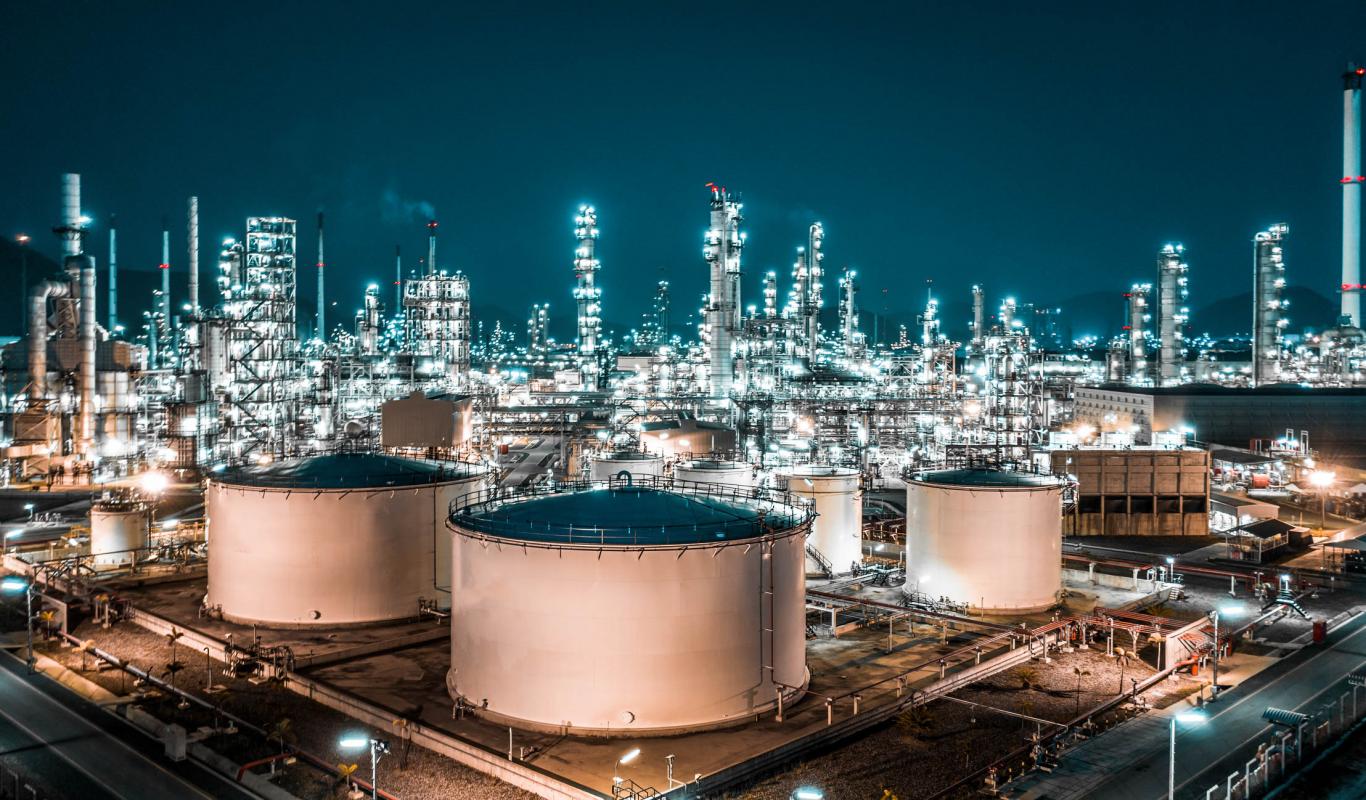Fortune 100 response to DE&I pressures

Global oil and gas demand and prices continue to recover from low levels due to Covid-19. Meanwhile, to respond to this demand, global oil supply is ramping up and is expected to exceed demand in 2022. However, this recovery remains fragile as Omicron, a new Covid-19 variant, has been detected.

| 2019 | 2020 | 21Q2 | 21Q3 | 21Q4 | 22Q1 | ||
|---|---|---|---|---|---|---|---|
| Crude prices | Brent (US$/bbl) | 64,2 | 41,8 | 68,8 | 73,5 | 78.4 | 70 |
| Rig count * | World | 2177 | 1352 | 1259 | 1421 | 1537 | ≈1620** |
| Demand (mmb/d) | Total | 99,5 | 90,8 | 95,2 | 97,7 | 98,9 | 98,5 |
| OECD | 47,7 | 42,0 | 44,0 | 45,7 | 46,0 | 45,5 | |
| non-OECD | 51,8 | 48,8 | 51,2 | 52,0 | 52,9 | 53,0 | |
| Supply (mmb/d) | Total | 100,5 | 93,8 | 94,1 | 96,3 | 98,8 | 99,9 |
| OPEC + | 53,4 | 47,9 | 48,0 | 49,4 | 51,5 | 52,5 | |
| non-OPEC + | 47,1 | 45,9 | 46,1 | 46,9 | 47,4 | 47,3 | |
| Excess (+) / Deficit (-) | 0,9 | 3,0 | -1,1 | -1,4 | -0,1 | 1,4 |
* Source: Baker Hughes
** Estimation by Sia Partners
Source: IFPEN
After crude oil prices hit a seven-year high in October, the Brent price has oscillated between 70 and 85 US$/bbl. As fears about the severity of Omicron variant fade, the price of crude starts to rise again up, reaching more than 80 US$/bbl in Januray 2022.
The demand continues to increase (+2,5 mmb/d from Q2 to Q3) and is superior to the production increase. The deficit between demand and production has reached 1,4 mmb/d in Q3 2021. The rotary rig count has steadily increased in 2021 to reach 1563 in December. However, it remains significantly lower than pre-Cocid levels (2019).
The economy continues to recover from the Covid impact and the demand for petroleum products is increasing. With the Omicron variant, Kerosene is more likely to be at risk if country borders are closed, thus affecting the aviation section.
OPEC + continues its strategy and will increase its production by 0.4 Mb/d, applied since last August. OPEC + has therefore chosen to be cautious and wait before possibly reviewing its strategy by increasing its production. It will continue to closely monitor the market and make adjustments based on the evolution of the pandemic.
The expected reversal of the supply-demand balance is predicted for Q1 2022.
Underpinned by OPEC+ policy, cold temperatures and long-term underinvestment trend, oil prices recovered from early autumn and hit record levels with Brent and WTI above 80$/bbl.
This high price trend spurred American shale oil producers to ramp up production: Permian basin is expected to go back to pre-Covid levels of 4.9 million barrels a day in early 2022. Indeed, as shale basins have already reached their peak production, producers can increase output volumes without pushing the prices down and thwarting OPEC+ objectives. The American shale landscape has recently been transformed with many producers switching from publicly traded companies to private operators. Following the Covid pandemic, public operators have set creditors and shareholders paydown as the top priority while private companies are often backed by private equity funds seeking growth production to increase asset value. However, as the productivity of the private sector is lower than that of the public sector, output will not be significantly changed. Currently, the shale production seems to be aligned with OPEC+ interests to maintain the price above a certain level.
Against this backdrop, the US administration was warning against the high crude prices for consumers and called for a surge in production. As this demand remained unanswered by the American shale producers and the OPEC+ group, the government, in coordination with China, Japan, South Korea and the UK, decided to draw down 50 million barrels of crude oil from the strategic reserves. However, the announcement of this all-time record release did not manage to curb the high price trend. A global coordination with OPEC+ and an American production recovery will be two necessary variables to dip prices.
However, this energy consumption rebound was weak, depending on the evolution of Coronavirus cases across the world. The emerging Omicron variant has brought the oil price down. Nevertheless, this decreasing trend was short-lived and price has been up since the end of December.
Thus, we see that the oil price is volatile; the uncertain environment refrains from getting accurate predictions and the coming months will still be challenging for the different stakeholders.
On December 1st 2021, a new step was taken with United Airlines becoming the first airline in history to operate a passenger flight using 100% sustainable aviation fuel. It shows the aviation willingness to decarbonize their sector.
On July 14th, 2021, the European Commission (EC) proposed an EU-wide blending mandate on sustainable aviation fuel (SAF), as well as uplifting obligations for airlines. The proposal includes a certain percentage of blending obligation for SAF, as 5% in 2030 and 63% in 2050. Currently, SAF production in 2020 accounted for less than 0.1% of the total jet fuel production in 2020 (corresponding approximately to 0,1 million tons of SAF). Based on the SkyNRG report, in order to meet both the EU-wide mandate and the additional volumes from national mandates, 3.5 million metric tons (Mt) of SAF would be required in 2030 and approximately 30 Mt in 2050. With its proven technology, the hydro processed fatty acid esters and fatty acids (HEFA) will remain, in short term, the major producer of the sustainable aviation fuel market.
Several Oil companies have decided to build plants or transform their current refinery to produce SAF. As an example Shell aims to make about 2 million tons per year of SAF by 2025. The major is already building a 820 000 tons per year biofuels plant in Rotterdam, the Netherlands and may build a biofuels plant of 550 000 tons per year in Singapore to meet the region's rising demand for sustainable aviation fuels (SAF). The number of renewable diesel and SAF projects continue to rise.
CCUS (Carbon Capture Utilization and storage) is a technology used to reduce the emission of CO2. The CO2 can be captured in diverse ways: directly from the atmosphere or during the processes that produce CO2. Once captured, the CO2 is processed (compression) and transported by pipeline, ship, rail or truck to be used as input or feedstock in the appropriate processes (methane production for example), or injected underground (geological formations) which trap and store permanently the CO2.

A multi-step value chain
Fuel transformation, industry and power generation will be the main sectors where CCUS will flourish. The analysis of the graph below (IEA) shows that the use of this technology should rapidly grow in the decades to come. The growth of CO2 captured by CCUS in the power generation process will principally affect China (x4 between 2030 and 2050 by 7 between 2030 and 2070). On the other hand, the US will experience rapid growth in its fuel transformation processes (x9 between 2030 and 2050 and x24 between 2030 and 2070). Finally, Europe will experience the smallest but steadiest rise of C02 capture thanks to CCUS in the three designated sectors.

Following new investments (800 million GBP by UK government in CCUS infrastructures and CCUS eligible to the 10 billion AUD investment fund of the Australian government) and regulations (EU, UK, Norway and US) in favour of CCUS technology, 14 large scale CO2 capture and injection projects have been launched since the Sleipner CO2 storage project in 1996. The mix of CCUS projects has expanded from the commercial CCUS facilities operating around the world today to a large number of CCUS pilots, demonstrations or projects in earlier stages of development (Gordon in Australia and Jilin Oilfield in China and DMX in France). The forecast of carbon captured by CCUS technology should reach 130Mt of C02 captured in the coming years (40Mt of CO2 in 2020) if all the announced projects (more than 30) are completed.